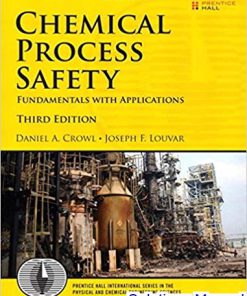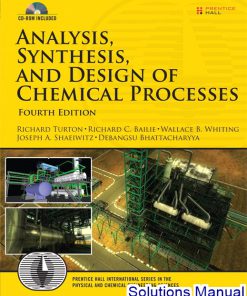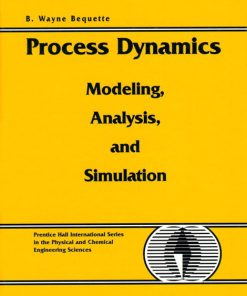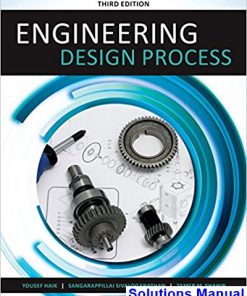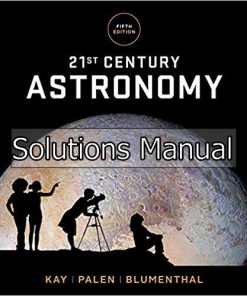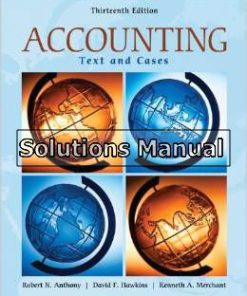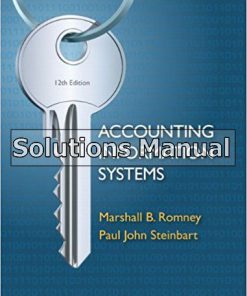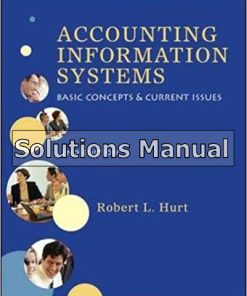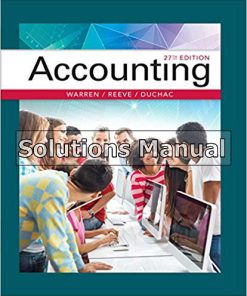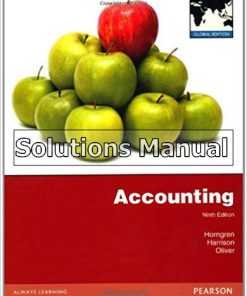Chemical Process Equipment Design 1st Edition Turton Solutions Manual
$26.50$50.00 (-47%)
Chemical Process Equipment Design 1st Edition Turton Solutions Manual.
You may also like
Instant download Chemical Process Equipment Design 1st Edition Turton Solutions Manual pdf docx epub after payment.

Product details:
- ISBN-10 : 013380447X
- ISBN-13 : 978-0133804478
- Author:
Trends such as shale-gas resource development call for a deeper understanding of chemical engineering equipment and design. Chemical Process Equipment Design complements leading texts by providing concise, focused coverage of these topics, filling a major gap in undergraduate chemical engineering education.
Richard Turton and Joseph A. Shaeiwitz present relevant design equations, show how to analyze operation of existing equipment, and offer a practical methodology for designing new equipment and for solving common problems. Theoretical derivations are avoided in favor of working equations, practical computational strategies, and approximately eighty realistic worked examples. The authors identify which equation applies to each situation, and show exactly how to use it to design equipment.
By the time undergraduates have worked through this material, they will be able to create preliminary designs for most process equipment found in a typical chemical plant that processes gases and/or liquids. They will also learn how to evaluate the performance of that equipment, even when operating conditions differ from the design case.
Table of contents:
1.0.Introduction —
1.1.Basic Relationships in Fluid Mechanics —
1.1.1.Mass Balance —
1.1.2.Mechanical Energy Balance —
1.1.3.Force Balance —
1.2.Fluid Flow Equipment —
1.2.1.Pipes —
1.2.2.Valves —
1.2.3.Pumps —
1.2.4.Compressors —
1.3.Frictional Pipe Flow —
1.3.1.Calculating Fractional Losses —
1.3.2.Incompressible Flow —
1.3.3.Compressible Flow —
1.3.4.Choked Flow —
1.4.Other Flow Situations —
1.4.1.Flow Past Submerged Objects —
1.4.2.Fluidized Beds —
1.4.3.Flowrate Measurement —
1.5.Performance of Fluid Flow Equipment —
1.5.1.Base-Case Ratios —
1.5.2.Net Positive Suction Head —
1.5.3.Pump and System Curves —
1.5.4.Compressors —
1.5.5.Performance of the Feed Section to a Process —
ch. 2 Process Heat Transfer —
2.0.Introduction —
2.1.Basic Heat-Exchanger Relationships —
2.1.1.Counter current Flow —
2.1.2.Cocurrent Flow —
2.1.3.Streams with Phase Changes Note continued: 2.1.4.Nonlinear Q versus T Curves —
2.1.5.Overall Heat Transfer Coefficient, U, Varies along the Exchanger —
2.2.Heat-Exchange Equipment Design and Characteristics —
2.2.1.Shell-and-Tube Heat Exchangers —
2.3.LMTD Correction Factor for Multiple Shell and Tube Passes —
2.3.1.Background —
2.3.2.Basic Configuration of a Single-Shell-Pass, Double-Tube-Pass (1-2) Exchanger —
2.3.3.Multiple Shell-and-Tube-Pass Exchangers —
2.3.4.Cross-Flow Exchangers —
2.3.5.LMTD Correction and Phase Change —
2.4.Overall Heat Transfer Coefficients-Resistances in Series —
2.5.Estimation of Individual Heat Transfer Coefficients and Fouling Resistances —
2.5.1.Heat Transfer Resistances Due to Fouling —
2.5.2.Thermal Conductivities of Common Metals and Tube Properties —
2.53.Correlations for Film Heat Transfer Coefficients —
2.6.Extended Surfaces —
2.6.1.Rectangular Fin with Constant Thickness —
2.6.2.Fin Efficiency for Other Fin Geometries Note continued: 2.6.3.Total Heat Transfer Surface Effectiveness —
2.7.Algorithm and Worked Examples for the Design of Heat Exchangers —
2.7.1.Pressure Drop Considerations —
2.7.2.Design Algorithm —
2.8.Performance Problems —
2.8.1.What Variables to Specify in Performance Problems —
2.8.2.Using Ratios to Determine Heat-Exchanger Performance —
2.8.3.Worked Examples for Performance Problems —
ch. 3 Separation Equipment —
3.0.Introduction —
3.1.Basic Relationships in Separations —
3.1.1.Mass Balances —
3.1.2.Energy Balances —
3.1.3.Equilibrium Relationships —
3.1.4.Mass Transfer Relationships —
3.1.5.Rate Expressions —
3.2.Illustrative Diagrams —
3.2.1.TP-xy Diagrams —
3.2.2.McCabe —
Thiele Diagram —
3.2.3.Dilute Solutions —
The Kremser and Colburn Methods —
3.3.Equipment —
3.3.1.Drums —
3.3.2.Tray Towers —
3.3.3.Packed Towers —
3.3.4.Tray Tower or Packed Tower? —
3.3.5.Performance of Packed and Tray Towers —
3.4.Extraction Equipment Note continued: 3.4.1.Mixer-Settlers —
3.4.2.Static and Pulsed Columns —
3.4.3.Agitated Columns —
3.4.4.Centrifugal Extractors —
3.5.Gas Permeation Membrane Separations —
3.5.1.Equipment —
3.5.2.Models for Gas Permeation Membranes —
3.5.3.Practical Issues —
ch. 4 Reactors —
4.0.Introduction —
4.1.Basic Relationships —
4.1.1.Kinetics —
4.1.2.Equilibrium —
4.1.3.Additional Mass Transfer Effects —
4.1.4.Mass Balances —
4.1.5.Energy Balances —
4.1.6.Reactor Models —
4.2.Equipment Design for Nonisothermal Conditions —
4.2.1.Nonisothermal Continuous Stirred Tank Reactor —
4.2.2.Nonisothermal Plug Flow Reactor —
4.2.3.Fluidized Bed Reactor —
4.3.Performance Problems —
4.3.1.Ratios for Simple Cases —
4.3.2.More Complex Examples —
…
People Also Search:
chemical engineering design project example
chemical process equipment manufacturers in india
what equipment do chemical engineers use
what is chemical product design
list of equipment used in chemical industry
chemical process equipment selection and design james r. couper pdf
hemical engineering equipment cost
what is process equipment design

